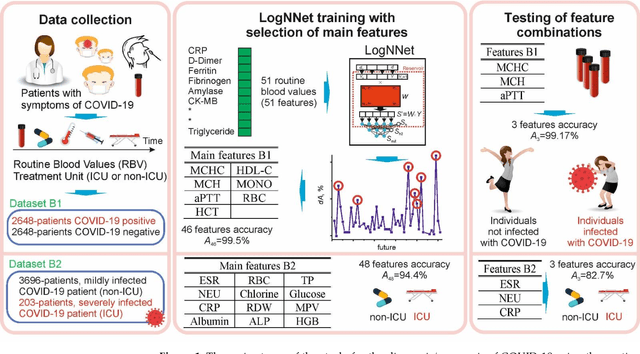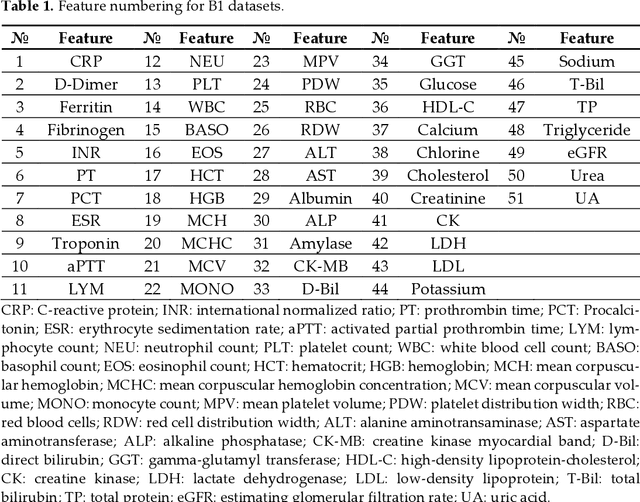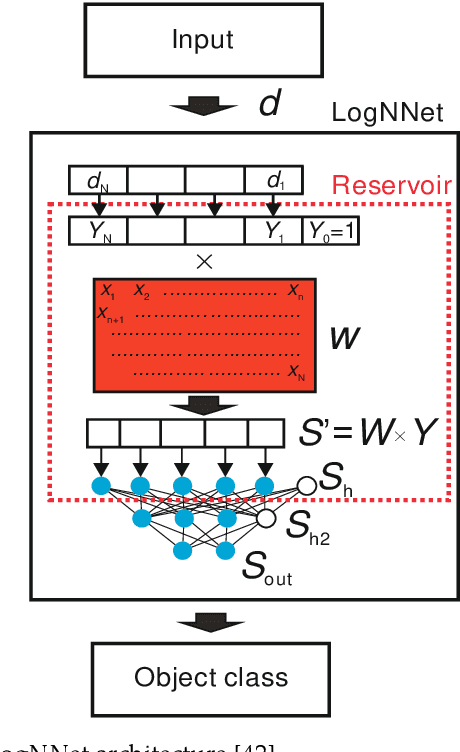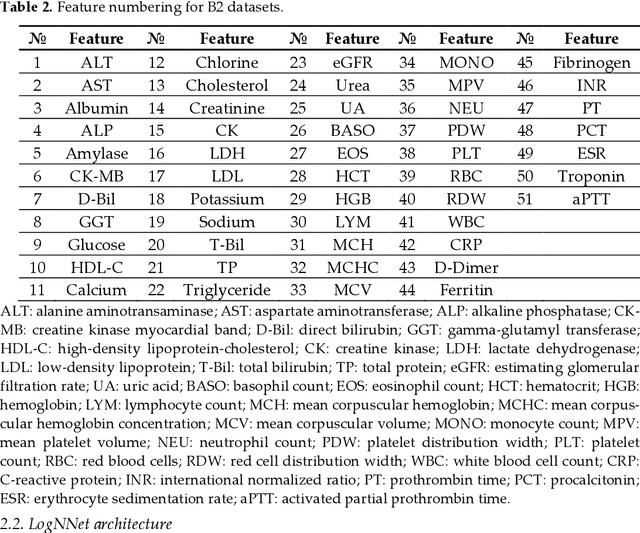A New Feature Selection Method for LogNNet and its Application for Diagnosis and Prognosis of COVID-19 Disease Using Routine Blood Values
Paper and Code
May 20, 2022



Since February-2020, the world has embarked on an intense struggle with the COVID-19 disease, and health systems have come under a tragic pressure as the disease turned into a pandemic. The aim of this study is to determine the most effective routine-blood-values (RBV) in the diagnosis/prognosis of COVID-19 using new feature selection method for LogNNet reservoir neural network. First dataset in this study consists of a total of 5296-patients with a same number of negative and positive covid test. Second dataset consists of a total of 3899-patients with a diagnosis of COVID-19, who were treated in hospital with severe-infected (203) and mildly-infected (3696). The most important RBVs that affect the diagnosis of the disease from the first dataset were mean-corpuscular-hemoglobin-concentration (MCHC), mean-corpuscular-hemoglobin (MCH) and activated-partial-prothrombin-time (aPTT). The most effective features in the prognosis of the disease were erythrocyte-sedimentation-rate (ESR), neutrophil-count (NEU), C-reactive-protein (CRP). LogNNet-model achieved an accuracy rate of A46 = 99.5% in the diagnosis of the disease with 46 features and A3 = 99.17% with only MCHC, MCH, and aPTT features. Model reached an accuracy rate of A48 = 94.4% in determining the prognosis of the disease with 48 features and A3 = 82.7% with only ESR, NEU, and CRP features. LogNNet model demonstrated a very high disease diagnosis/prognosis of COVID-19 performance without knowing about the symptoms or history of the patients. The model is suitable for devices with low resources (3-14 kB of RAM used on the Arduino microcontroller), and is promising to create mobile health monitoring systems in the Internet of Things. Our method will reduce the negative pressures on the health sector and help doctors understand pathogenesis of COVID-19 through key futures and contribute positively to the treatment processes.
 Add to Chrome
Add to Chrome Add to Firefox
Add to Firefox Add to Edge
Add to Edge